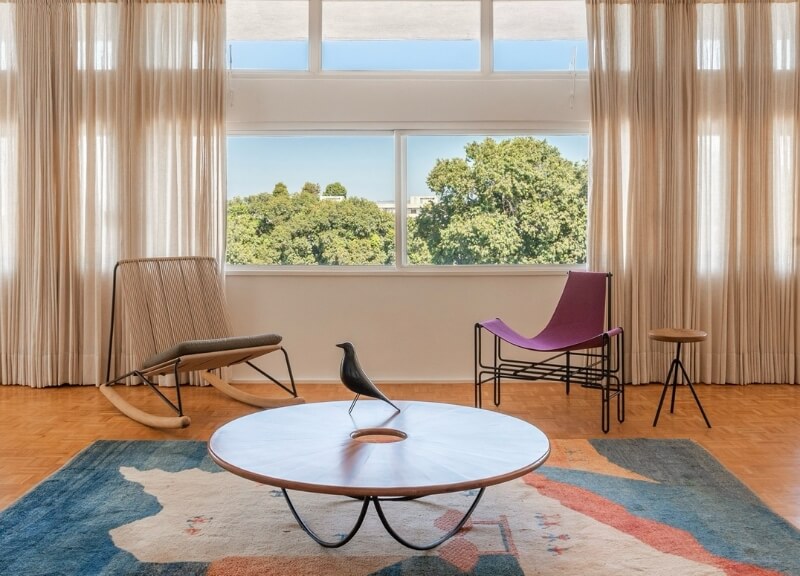
Julie Coffee Table: A Conversation with Samuel Lamas
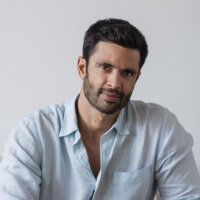
Founded by architect and designer Samuel Lamas, Lamas Design draws inspiration from Brasília’s modernist spirit and the surrounding Brazilian savannah. The studio’s award-winning Julie Coffee Table—recognized in the Furnishing – Product category at the Architecture MasterPrize (AMP)—demonstrates a commitment to timeless forms, sustainable practices, and poetic simplicity. We spoke with Samuel about his design philosophy, the process behind creating the Julie Coffee Table, and how the architecture of Brasília shaped his distinct style.
Could you give us a little background about yourself and Lamas Design?
Samuel Lamas: Lamas Design, based in Brasília, emerged from my passion for modernist ideals and sustainable craftsmanship. Growing up in a city known for its bold architectural lines, I was inspired to blend functionality with an elevated aesthetic. Each piece we create is a balance of geometry, lightness, and poetry, aiming to bring timeless design principles into harmony with the world around us.
What was your goal when designing the Julie Coffee Table?
Samuel Lamas: We wanted a design that transcended mere function—a piece that would offer visual harmony and structural clarity. The idea was to create a coffee table that felt both light and durable, contemporary and timeless. Above all, it needed to reflect our ethos of sustainability and simplicity while transforming any room with its presence.
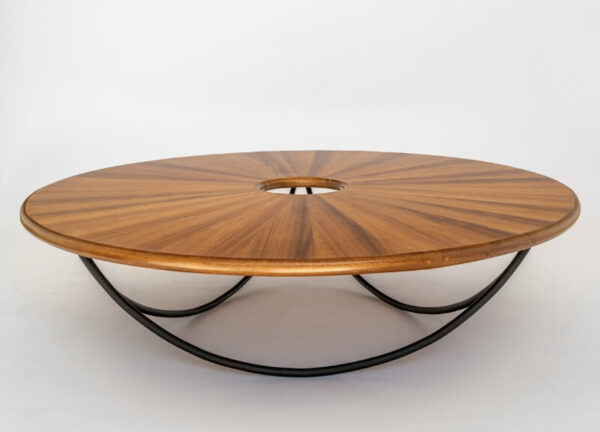
Could you walk us through your design process for the Julie Coffee Table?
Samuel Lamas: It started with exploring the geometry of natural forms and focusing on minimal materials. The circular top was inspired by the radiance of the sun; it has a central opening that draws the eye and imparts a sense of airiness. Beneath it, three arches form an equilateral triangle that ensures both stability and economy of materials. We combined certified wood with a fluid metal structure to create a dialogue between warmth and precision.
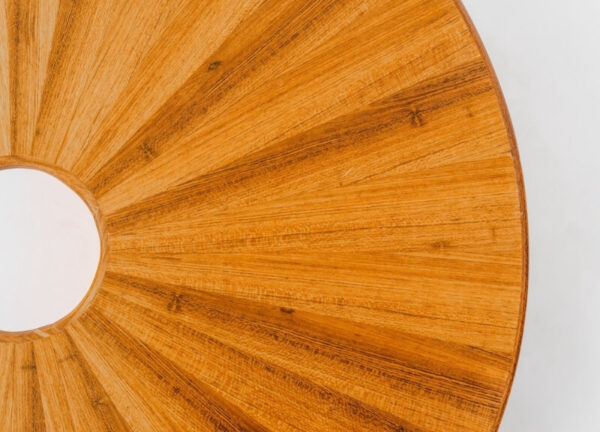
Were there particular challenges in bringing such a light yet stable design to life?
Samuel Lamas: Achieving visual lightness while ensuring genuine stability is always a challenge. The interplay of curves and straight lines required rigorous testing and collaboration with artisans. Through multiple prototypes, we refined every detail until it felt effortless—like the piece was meant to exist exactly that way.
What do you consider to be the most distinct or innovative feature of the Julie Coffee Table?
Samuel Lamas: The balance between simplicity and movement. The open, sun-like circular top invites interaction, and the arch-based structure gives the table a sense of motion. It’s playful, but also driven by a minimal, sustainable approach. This combination of structure, lightness, and fluid form is what makes it stand out.
Which outcome of the Julie Coffee Table project makes you most proud?
Samuel Lamas: Its quiet Brazilian elegance. It resonates on a universal level while honoring our local roots. Combining innovation, craftsmanship, and eco-awareness in a single piece feels like the truest expression of our values. Winning the Architecture MasterPrize demonstrates how a design rooted in Brazil’s spirit can speak to the world.
What first inspired you to become a designer, and how has your journey shaped your current approach?
Samuel Lamas: Growing up in Brasília, I was surrounded by modernist architecture set against the openness of the Brazilian savannah. It taught me to value clarity and expansiveness, yet always be mindful of practical considerations. Studying in Rome added an appreciation for blending tradition with new ideas. Over time, I’ve learned to distill these influences into designs that feel simple, refined, and integral to their environment.
Who in the design world has most influenced your vision?
Samuel Lamas: I draw significant inspiration from Lina Bo Bardi, Joaquim Tenreiro, Sergio Rodrigues, and Geraldo de Barros—pioneers who connected Brazilian design to our cultural essence. From architecture, the works of Oscar Niemeyer and Lucio Costa in Brasília continue to inform how I think about space, freedom, and restraint.
If you could own any building or design object in the world, what would it be and why?
Samuel Lamas: I’d choose Lina Bo Bardi’s Casa de Vidro (Glass House). It embodies a seamless dialogue between architecture and nature—a testament to what’s essential. There’s a meditative quality to it that resonates with the kind of harmony I aim to capture in my own designs.
Looking ahead, what trends or technologies do you believe will shape the future of product design?
Samuel Lamas: Sustainability is the key—designs must respect the planet while offering meaningful experiences. As technologies like AI and precision manufacturing advance, we can optimize materials and fabrication. I also see a renewed focus on creating deeper connections, whether to nature or our cultural heritage, which will drive thoughtful, human-centric design.
How can design, whether in furniture or architecture, truly impact society?
Samuel Lamas: Thoughtful design has a profound ability to enhance how we live and interact. It can create calm, sustainable environments that honor local traditions and resources. By focusing on essentials, design encourages a more harmonious and purposeful way of living—something our world needs right now.
Lastly, how does receiving an Architecture MasterPrize affect your work moving forward?
Samuel Lamas: It’s a tremendous honor and validation of the values that guide us—clarity, simplicity, and environmental respect. This recognition pushes us to continue exploring, to refine our design language, and to keep creating pieces that are timeless, beautiful, and sustainably crafted. We hope it inspires others to see the power of thoughtful design in shaping our shared future.
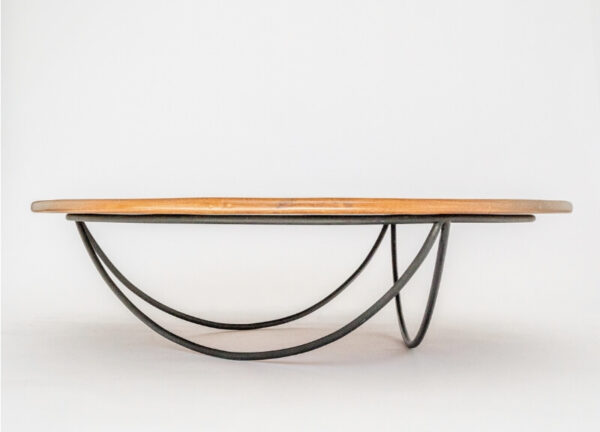
Thank you to Samuel Lamas for offering insight into the Julie Coffee Table—a piece that merges the warmth of Brazilian design, the purity of modernist geometry, and the timeless relevance of sustainable craftsmanship. Through understated forms and meticulous detailing, Lamas Design demonstrates how architectural product design can be a poetic reflection of both local heritage and universal appeal.
